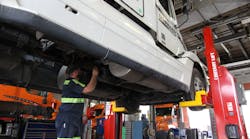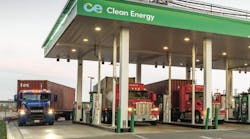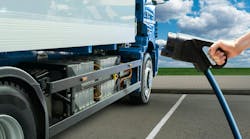You don’t need a crystal ball when it comes to determining the useful life of an asset in your fleet. What you do need is to spec and maintain it properly so that it continues to function for the time period that is right for your particular operation.
To get the most out of an asset it needs to be purpose-built for the intended application. This includes looking at the vehicle’s operating environment including travel radius, terrain and weather conditions. But it also includes ensuring it is spec’d for the weights it will carry, that the engine is spec’d to match the duty cycle and that there are enough driver amenities to help you in your recruiting and retention efforts.
Another thing to factor into the vehicle specification process is the truck’s potential resale value. This will require some guesswork, but there are many resources that you can access to find out what specs are valued on the secondary market and which are not.
Once you’ve added a vehicle to your fleet, you need to set up the appropriate maintenance schedule based on manufacturer’s recommendations and your own duty cycle requirements. The next step is to start accumulating data on what technicians are finding during preventive maintenance inspections and services, as well as any data from on-the-road breakdowns.
If you have several similarly spec’d trucks, you can aggregate the data to spot trends. This will allow you to move from a preventive type maintenance program to more of a predictive maintenance model. For example, if you notice that for a particular group of assets alternators consistently fail at 100,000 miles you can schedule service campaigns to proactively replace those alternators and potentially avoid a road call.
While there is no one answer as to what an asset’s useful life is, once you have determined your asset replacement cycle be mindful of keeping trucks past the useful life you have defined. If you go past your anticipated useful life, maintenance costs could rise and you run the risk of maintenance costs exceeding the value of the equipment. I call this non-synchronous depreciation; this is the point where the depreciation and the cost of maintenance are no longer in harmony with the initially planned vehicle life cycle.
The other major risk of keeping an asset beyond its useful life is driver retention. Drivers, like everyone else, want something newer and more reliable with the latest technology. You will likely have an easier time recruiting and retaining drivers if you are running newer equipment with the amenities drivers prefer.
There is also a risk of retiring an asset too soon and finding that the value you assign to the asset is not the same value that the market reflects. In this case the market could pay significantly less than what you owe on the asset and you may not be able to meet your targeted residual value.
The best thing to do is to establish an asset life cycle, and unless you have a significant change in your business, stick to the plan. Of course, this plan needs to be predicated on having the asset properly spec’d for its intended application, performing maintenance on a regular basis and listening to what the data is telling you.
Common sense planning coupled with solid data analytics is your best strategy.



